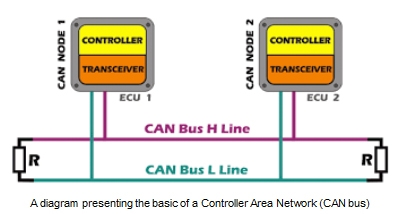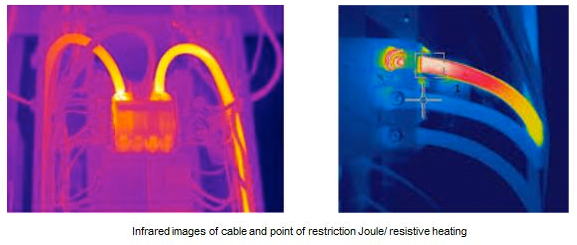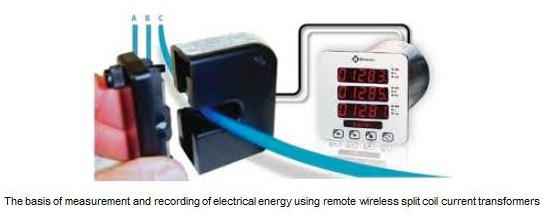Current Research
Non-invasive and non-contact determination of rotational shaft speed using ultrasound and Doppler effect
There are numerous methods to determine the rotational speed of a shaft or pulley. These can be a manual handheld type, i.e. a stroboscope or a tachometer or alternatively, electro mechanical systems which present a continual measurement of rotational speed and are generally used in automatic control systems, for example incremental encoders or tacho-generators.
Another method to detect rotational speed is to attach ‘something’ to the shaft which acts as a reference point or discontinuity. For example a reflective marker can be used to ‘return’ light emitted from a light source back to a light sensor. Another method is to attach a small magnet to the shaft and with a suitable, ‘Hall Effect’ sensor mounted close to the shaft, use this to detect the magnetic field of the magnet. Logically in both these cases, the time period between successive detection of the reference point by the sensor equates to rotational speed.
This research focuses on continual measurement of shaft speed since current technology is not application generic with the sensory systems generally requiring shafts couplings and cams etc, to convey the speed parameter from the shaft to the measuring device and also mechanical brackets to physically support the device.
It is proposed that ultrasound detection and derivation of shaft rotational speed removes the need for complexed apparatus to convey the speed parameter since there is no physical connection required between the ultrasound source and the detecting element. Furthermore, mounting systems can be quite simple and easy to install.
The aim of the study is to research and develop a suitable ultrasound transmitter, which can be attached to a rotating element. In practice it should be the case that at some reference point relative to the rotating ultrasound device the frequency and the magnitude of signal emanating from the device should vary in accordance with the Doppler Effect.
The Doppler effect describes a moving sound source, most identifiable with a motorcycle moving towards a listener and then passing and moving away from the listener. Hence if a sound source is attached to a rotating shaft it should be the case that the variance of signal frequency and magnitude should correlate with the rotational speed parameter. So the second objective of this research study is to prove this hypothesis.
If the hypothesis is upheld, the third and final objective of this research study is to develop an electronic system to detect the signal of the ultrasound transmitter and extract the rotational speed component.

Determination of velocity of rotational magnetic field using Hall effect sensors
Electrical motors and generators fundamentally operate by either reacting to or generating a rotaing magnetic field. The rotating field is generally perceived internally to the rotating electrical machine, however the field must permeate the machine enclosure and hence be detectable using magnetic feidl sensors such as a Hall effect sensor.
The Hall effect is the production of a voltage difference (the Hall voltage) across an electrical conductor, transverse to an electric current in the conductor and a magnetic field perpendicular to the current. It was discovered by Edwin Hall in 1879.
This study focuses on research to detect the dynamics of a rotating magnetic field external to the casing of a electrical machine to aid technology to continually measure shaft speed since current technology is not application generic with the sensory systems generally requiring shafts couplings and cams etc, to convey the speed parameter from the shaft to the measuring device and also mechanical brackets to physically support the device.
It is proposed that magnetic field detection and derivation of shaft rotational speed removes the need for complexed apparatus to convey the speed parameter since there is no physical connection required between the magnetic source and the detecting element. Furthermore, mounting systems can be quite simple and easy to install.

Understanding of CAN bus and the dynamics of the buss data consumers in relation to stresses imposed on CAN and data consumers by fluctuations of power supplies
A Controller Area Network (CAN bus) is a vehicle bus standard designed to allow microcontrollers and devices to communicate with each other in applications without a host computer. It is a message-based protocol, designed originally for multiplex electrical wiring within automobiles, but is also used in many other contexts.
The research study comes about from the circumstance of a recent court case, where a car was alleged to have ‘driven itself’ and the causation of this circumstance was argued to be due to stresses imposed on the CAN bus and those microcontrollers and devices attached to the bus by fluctuations of bus power supplies.
The study aims to understand the vulnerability if at all, of microcontrollers and devices attached to a CAN bus by fluctuations of bus power supplies brought about by the introduction of electrical loads on a vehicles power supply.
It is proposed that magnetic field detection and derivation of shaft rotational speed removes the need for complexed apparatus to convey the speed parameter since there is no physical connection required between the magnetic source and the detecting element. Furthermore, mounting systems can be quite simple and easy to install.

Understanding of heating attributes of confined electrical conductors and at points of restriction to electrical current flow
A natural phenomenon of electrical conduction is Joule heating, also known as ohmic heating and resistive heating, and is the process by which the passage of an electric current through an electrical conductor produces heat.
In normal circumstances the heat is dissipated naturally and a state of thermal equilibrium persists. However if the heat generated cannot be dissipated in normal working circumstances, then the temperature of the conductor will increase to a point where physical damage of the conductor and its intimate environment comes about. The latter circumstance is prevalent in confined electrical conductors. Further at points of restriction to electrical current flow the same phenomena of Joule heating persists yet the heating phenomenon is concentrated.
Both the scenarios bringing about increased joule heating are most common in the ignition of fires, i.e. ‘electrical fires’. So the basis of this study is to understand more fully the fundamental attributes of Joule heating since the phenomenon is inherently used within many other electrical components/appliances, some beneficial i.e. fuses, electrical heaters and hair driers, and some detrimental, i.e. electrical motors, and transformers.

Understanding of the measurement and recording of electrical energy using remote wireless split coil current transformers.
The government wants energy suppliers to install smart meters in every home in England, Wales and Scotland. There are more than 26 million homes for the energy suppliers to get to, with the goal of every home having a smart meter by 2020.
The technology used within a smart meter system is not new, having been used within industry for many a year. However, when revenue i.e. debit or credit is based on the reading of a smart meter then the accuracy of the meter can be brought into question.
The basis of this study is to understand the dynamics of smart metering, since logic directs that circumstances will arise where the smart meter accuracy is the focus of litigation.

Our Services
Useful Documents
Useful Documents
Professional Credentials
The supporting documents of Dr. Robert Brown. An expert witness in the fields of electrical, electronic and control engineering. A renowned expert in the operation and design of electrical fuses, circuit breakers and other electrical fault protection systems, specialising in how these devices operate in domestic and industrial systems.
View Our Litigation Specialisms
View Our Case History
View Our Notable Cases
White Papers and Reference Material
Documents for aid legal and insurance professionals, engineers, and individuals with the intent to help understanding of electrical matters most commonly the focus of disputes, i.e. electrical shock, electrocutions, electrical fires, poor electrical working practices and the like.
